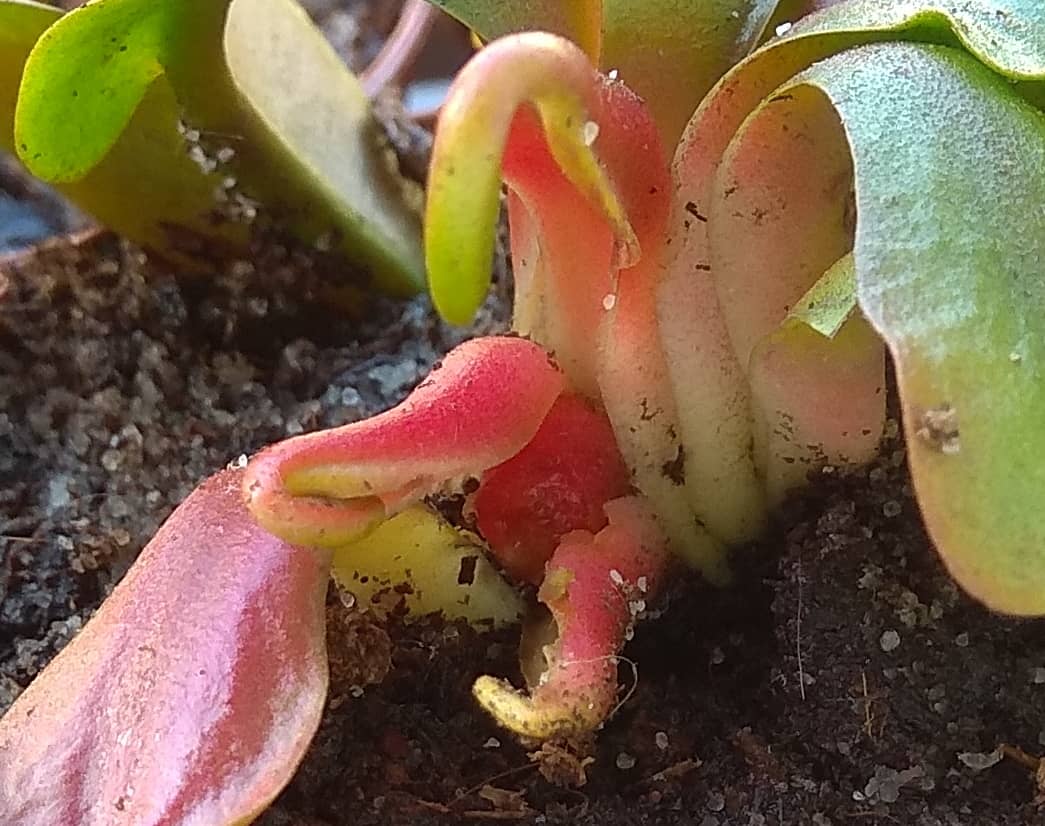Winter care for carnivorous plants in the refrigerator
Winter care for carnivorous plants in the refrigerator is one of the space-saving. This procedure is not among the most common wintering methods, so I have created a guide to make the process easier. The guide includes several plants to accurately demonstrate each step.
First, remove the plant from the substrate and clean it of dead parts or any parts that could cause rot. For Venus flytraps, it is essential to remove not only blackened traps and leaves but also closed traps and traps containing prey remnants.
In the first photo, you can see a Venus flytrap that has been removed from the substrate. I purposely selected a specimen with many dead parts. It is likely that your plant will not require such extensive cleaning.
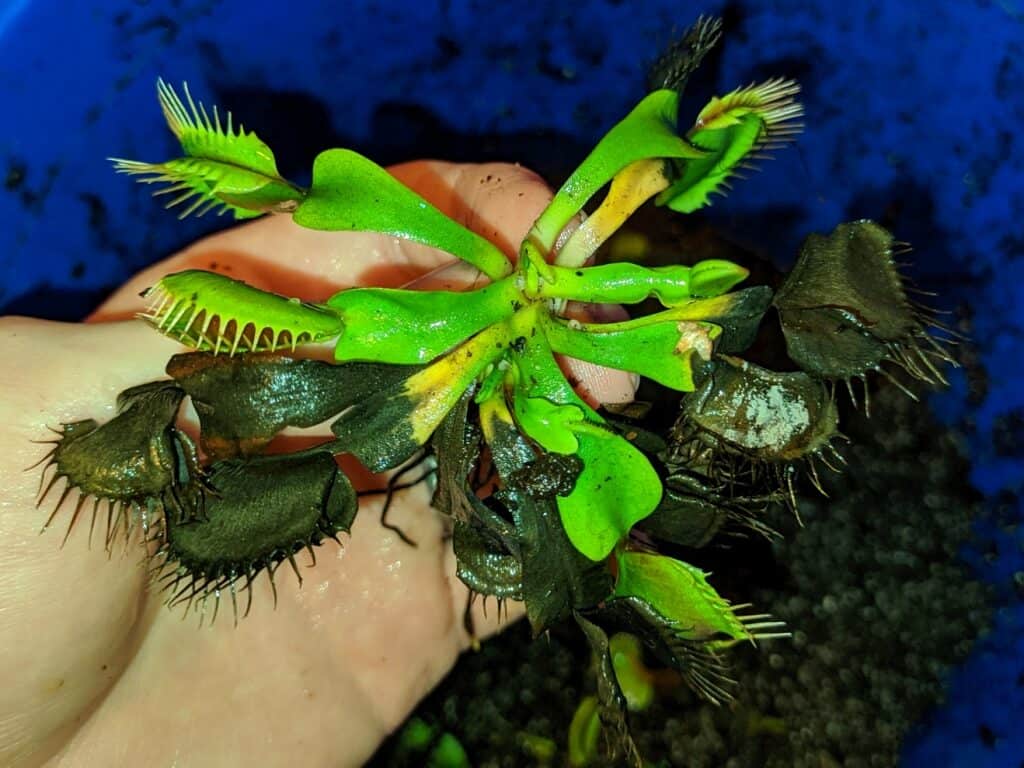
Next, clean the plant. In the photo, you can see that a large number of leaves and traps have been trimmed. Don’t hesitate to cut off all the parts you think need trimming (but avoid cutting into the lower white part—the „bulb“). The plant will sprout again in spring.
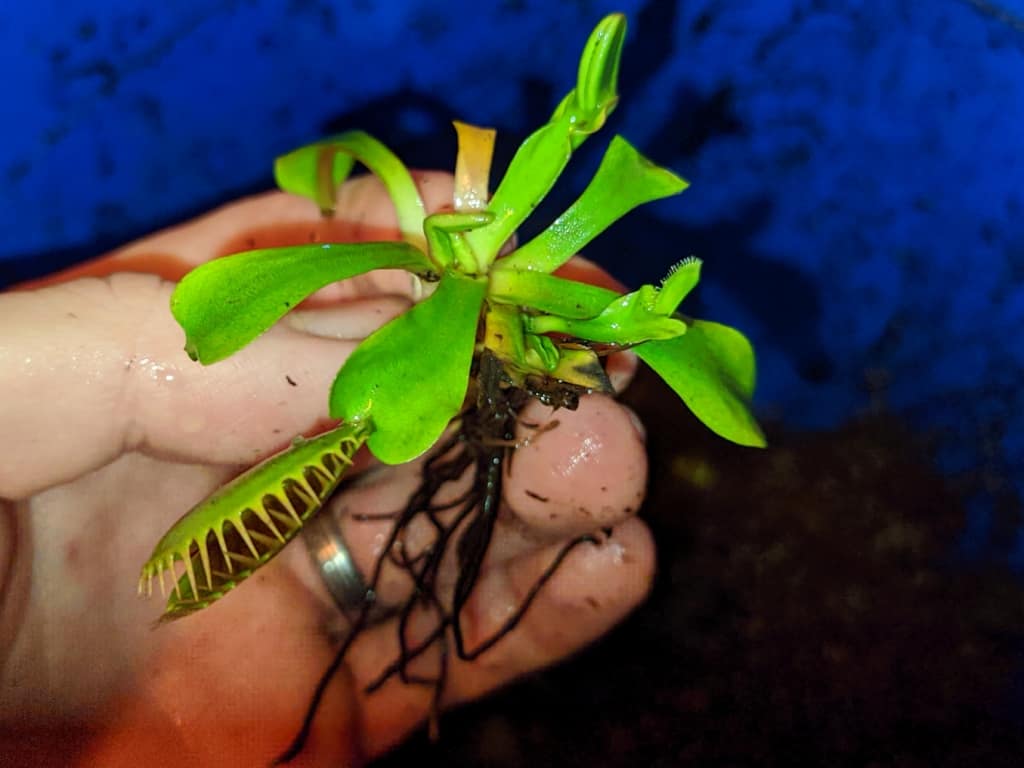
Next, clean the plant under running water or in a bucket of water. It is essential to ensure that no old substrate remains in the roots.
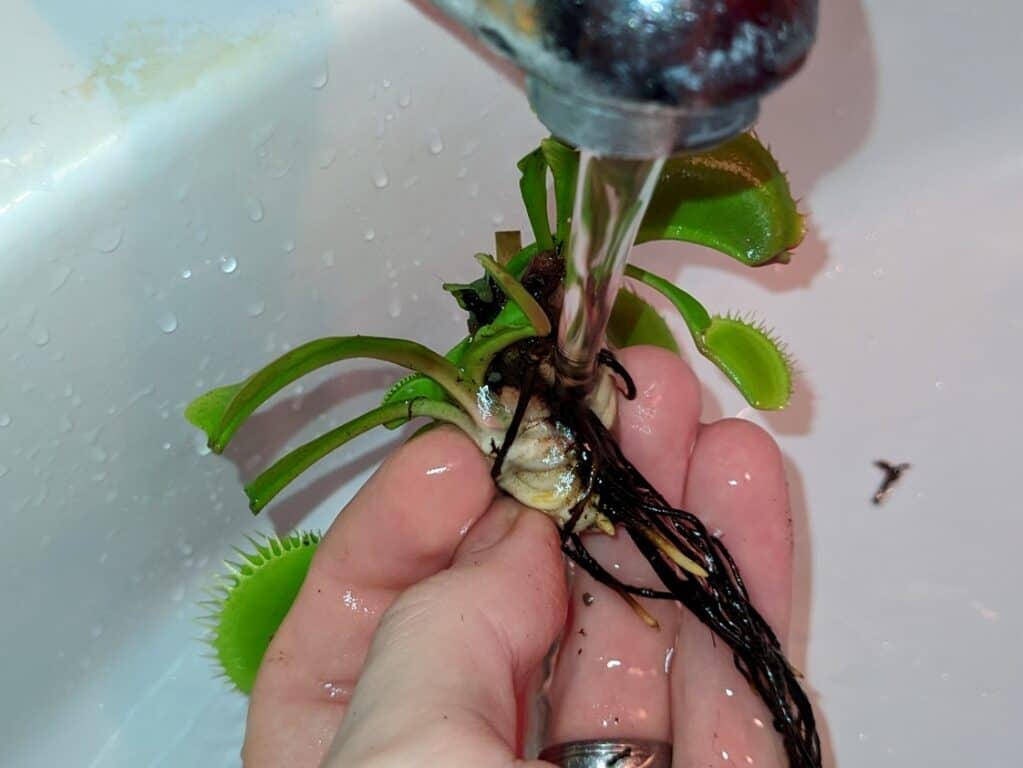
The second-to-last step is wrapping the roots in a moist tissue. If you have multiple species or clones of plants, don’t forget to label them to avoid identification issues in spring.
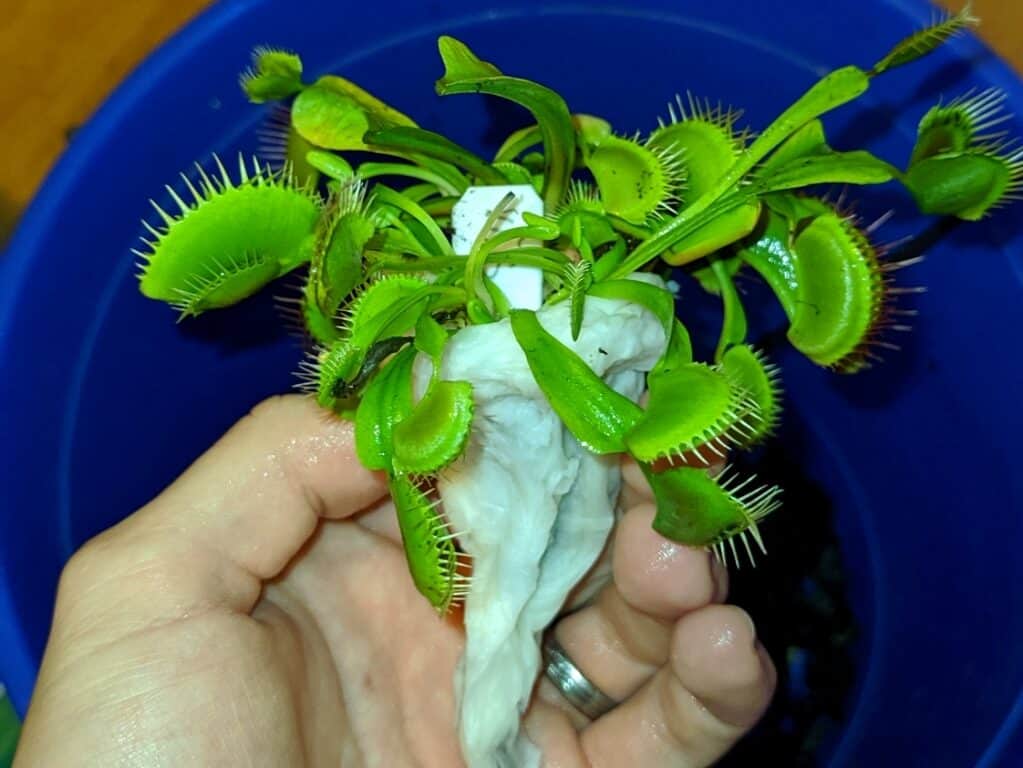
For Sarracenia (pitcher plants), the process is similar. Some growers trim all the pitchers entirely, while others, including myself, only trim open pitchers that might contain prey. Pitchers that are still growing and remain closed are left untrimmed.
The first photo shows the pitcher plant before trimming.
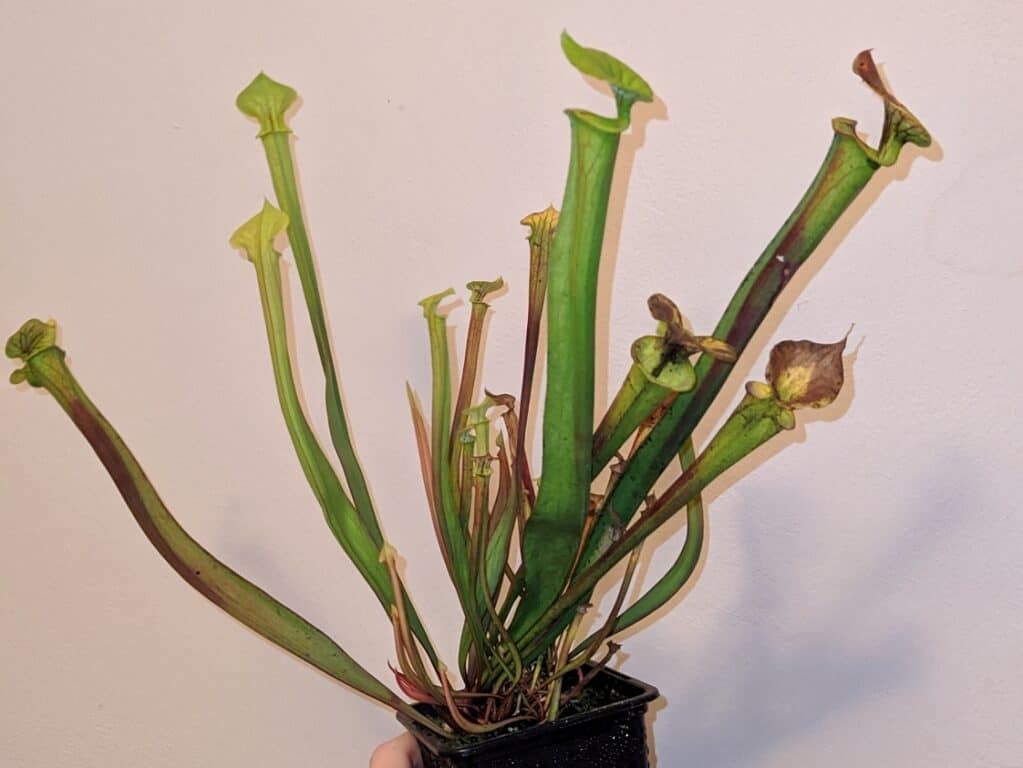
The second photo shows the pitcher plant after trimming. Compared to its original state, only a few pitchers remain. Just like the Venus flytrap, the plant will sprout again in spring.
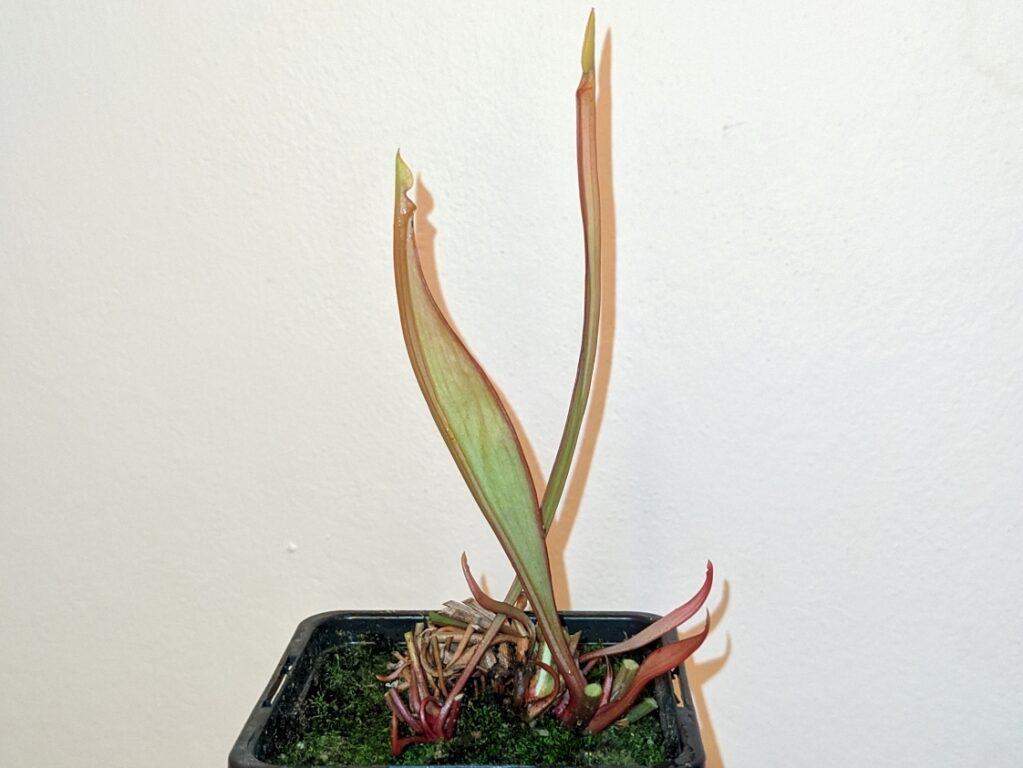
The final step is placing the plant, with its roots wrapped, into a resealable bag or container to ensure the tissue remains moist.
As you can see in the image, this method is very space-efficient, allowing me to store over a hundred plants in a single drawer in the refrigerator.
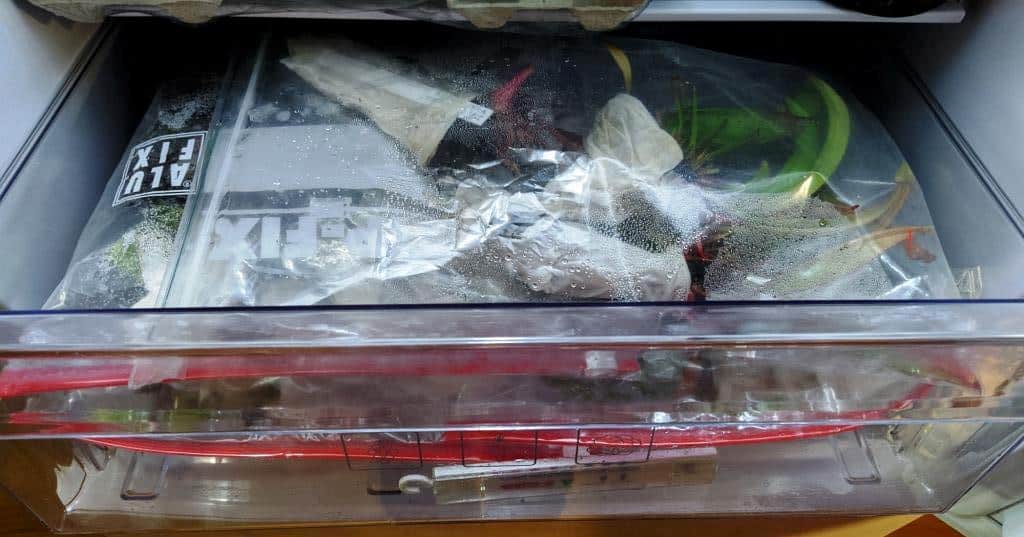
Potential issues with wintering plants in the refrigerator
The most common issue that can arise during refrigerator wintering is the beginning of plant growth. This is caused by excessively high temperatures, which lead plants to believe that spring has arrived. It is recommended to occasionally check the temperature near the plants in the refrigerator using a thermometer. A refrigerator is just a machine, and if you frequently store large quantities of room-temperature food or keep the doors open often, warm air enters, raising the internal temperature. It’s helpful to observe your refrigerator’s performance and, if needed, slightly increase its cooling power while chilling added food. The ideal temperature for plants in the refrigerator is below 5°C, which is easiest to maintain in the coldest section—typically the bottom vegetable drawer above the freezer.
If your plants start growing despite precautions, you need to carefully acclimatize them to sunlight. New leaves formed without light exposure are white and lack chlorophyll (etiolation). If you place the plant directly in strong sunlight, it will burn. However, the plant will manage this issue, and subsequent leaves will grow properly.
In the photo, you can see a Venus flytrap that started growing in the refrigerator. The plant looks unhealthy. It is pale, and due to the lack of substrate planting, it began growing sideways in the refrigerator uncontrollably. Even such a poorly-looking Venus flytrap can recover, and by the end of the growing season, you will once again have a strong and healthy plant.
